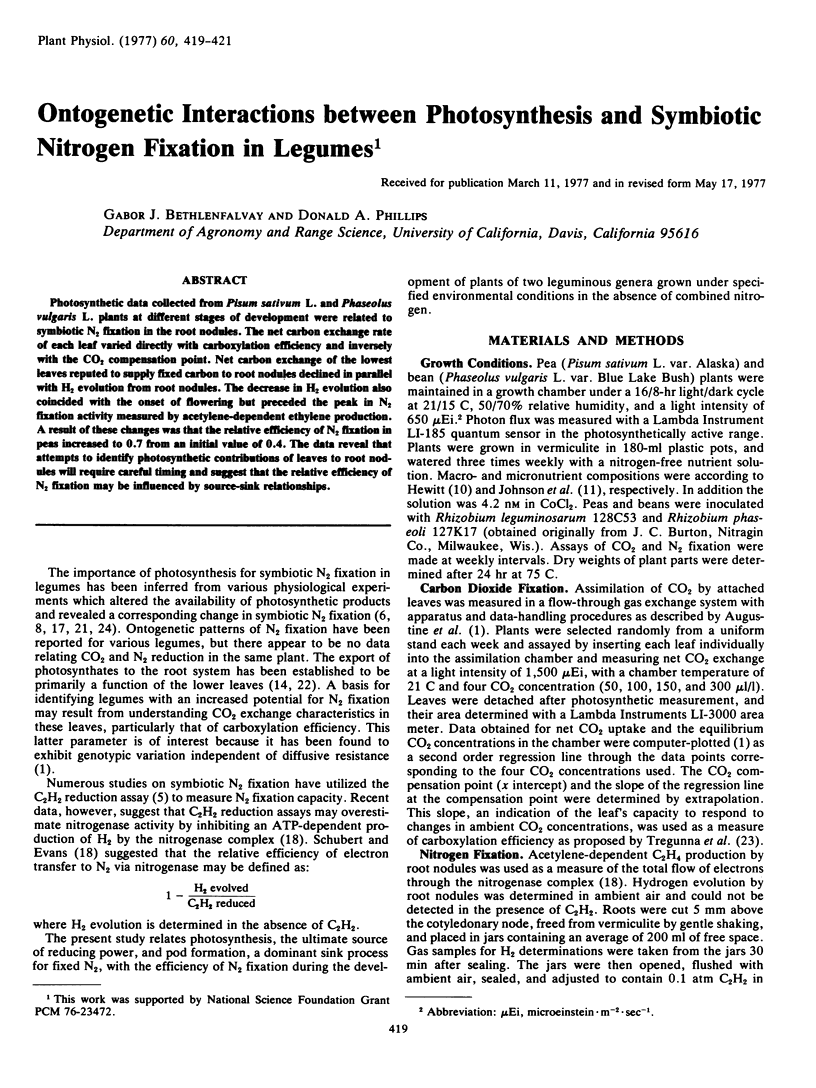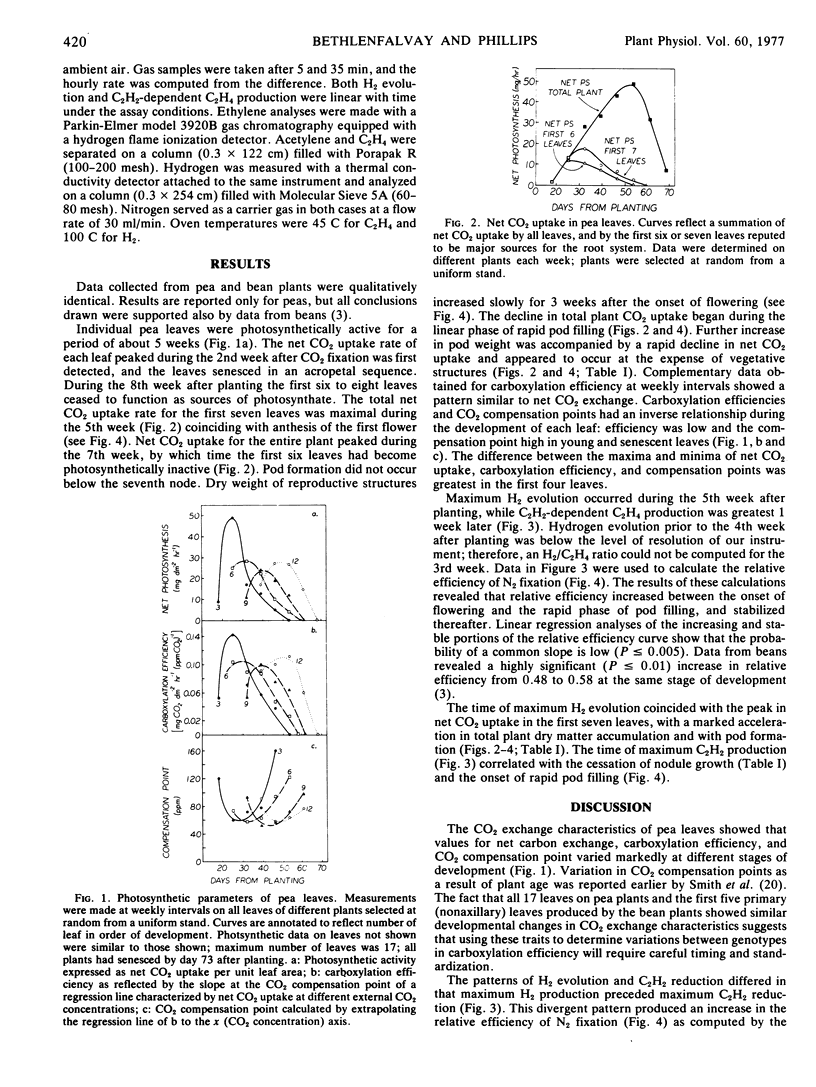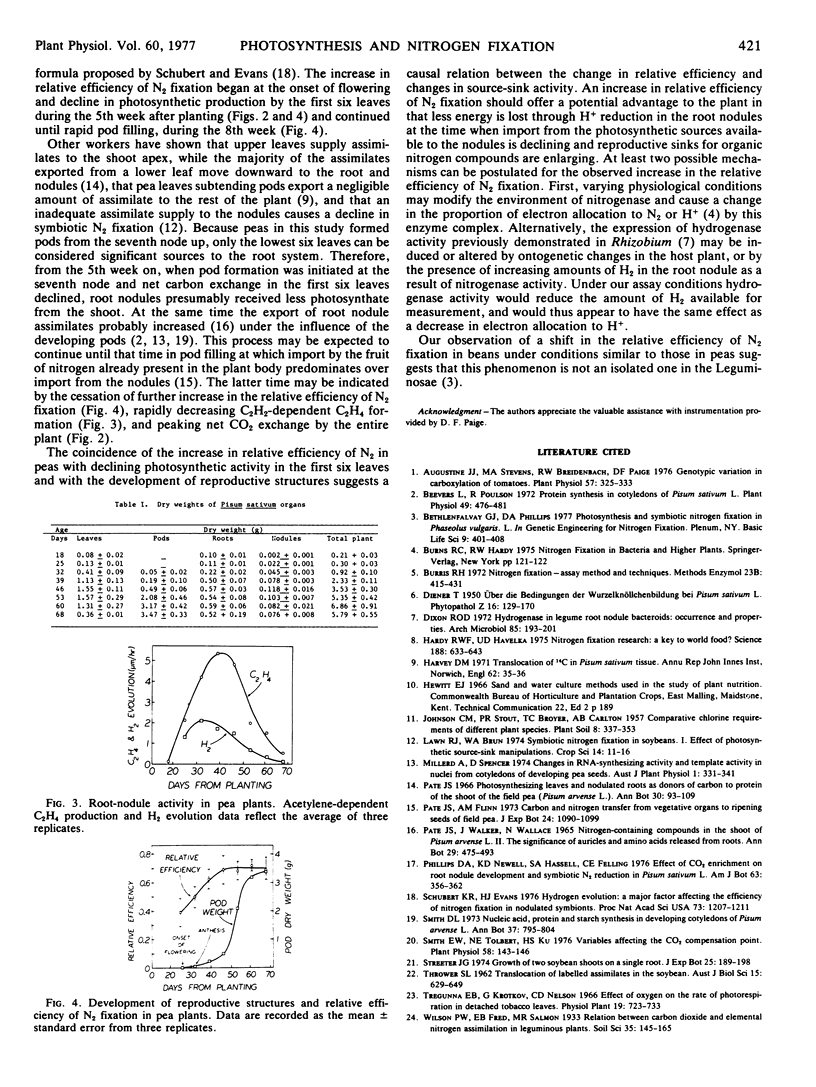Abstract
Photosynthetic data collected from Pisum sativum L. and Phaseolus vulgaris L. plants at different stages of development were related to symbiotic N2 fixation in the root nodules. The net carbon exchange rate of each leaf varied directly with carboxylation efficiency and inversely with the CO2 compensation point. Net carbon exchange of the lowest leaves reputed to supply fixed carbon to root nodules declined in parallel with H2 evolution from root nodules. The decrease in H2 evolution also coincided with the onset of flowering but preceded the peak in N2 fixation activity measured by acetylene-dependent ethylene production. A result of these changes was that the relative efficiency of N2 fixation in peas increased to 0.7 from an initial value of 0.4. The data reveal that attempts to identify photosynthetic contributions of leaves to root nodules will require careful timing and suggest that the relative efficiency of N2 fixation may be influenced by source-sink relationships.
Full text
PDF


Selected References
These references are in PubMed. This may not be the complete list of references from this article.
- Augustine J. J., Stevens M. A. Genotypic variation in carboxylation of tomatoes. Plant Physiol. 1976 Feb;57(2):325–333. doi: 10.1104/pp.57.2.325. [DOI] [PMC free article] [PubMed] [Google Scholar]
- Beevers L., Poulson R. Protein Synthesis in Cotyledons of Pisum sativum L: I. Changes in Cell-Free Amino Acid Incorporation Capacity during Seed Development and Maturation. Plant Physiol. 1972 Apr;49(4):476–481. doi: 10.1104/pp.49.4.476. [DOI] [PMC free article] [PubMed] [Google Scholar]
- Bethlenfalvay G. J., Phillips D. A. Photosynthesis and symbiotic nitrogen fixation in Phaseolus vulgaris L. Basic Life Sci. 1977;9:401–409. doi: 10.1007/978-1-4684-0880-5_24. [DOI] [PubMed] [Google Scholar]
- Burris R. H. Nitrogen fixation--assay methods and techniques. Methods Enzymol. 1972;24:415–431. doi: 10.1016/0076-6879(72)24088-5. [DOI] [PubMed] [Google Scholar]
- Dixon R. O. Hydrogenase in legume root nodule bacteroids: occurrence and properties. Arch Mikrobiol. 1972;85(3):193–201. doi: 10.1007/BF00408844. [DOI] [PubMed] [Google Scholar]
- Hardy R. W., Havelka U. D. Nitrogen fixation research: a key to world food? Science. 1975 May 9;188(4188):633–643. doi: 10.1126/science.188.4188.633. [DOI] [PubMed] [Google Scholar]
- Schubert K. R., Evans H. J. Hydrogen evolution: A major factor affecting the efficiency of nitrogen fixation in nodulated symbionts. Proc Natl Acad Sci U S A. 1976 Apr;73(4):1207–1211. doi: 10.1073/pnas.73.4.1207. [DOI] [PMC free article] [PubMed] [Google Scholar]
- Smith E. W., Tolbert N. E., Ku H. S. Variables Affecting the CO(2) Compensation Point. Plant Physiol. 1976 Aug;58(2):143–146. doi: 10.1104/pp.58.2.143. [DOI] [PMC free article] [PubMed] [Google Scholar]


